This week I have another special guest, an Art Director who has had a hand in launching the careers of many SFF artists working today. Zoë Robinson has been at Fantasy Flight Games since 2006, and is officially the Senior Commissioning Art Director. Unofficially she is the woman of a thousand self-reference photos. (If you’re an artist who has worked with Zoë, you’re already laughing.)
Once again I’d like to thank the awesome Tim Paul for illustrating this article. He really knocked it out of the park this time. This week’s illustrations even beat my personal fave (and portrait) from the Sex, Lies and Art Direction article.
And, as always, even though we have 2 ADs writing this post, we don’t speak for every AD and every company, our opinions and twisted humor and potty mouths are our own!
At Orbit Books I almost never have to deal with licensed properties. At Yen Press we license a lot of titles from Japan and Korea, but I admit that the editors mostly handle dealing with the licensing companies. However, I do know, mostly from listening to the top secret Art Director hotline (aka iChat) that dealing with licenses can add a whole new dimension of work (and potential hassles) to projects. So for this post I thought it would be helpful to do a Q+A with Zoë, since Fantasy Flight Games deals with some of the strictest IPs around: Star Wars, Lord of the Rings, Game of Thrones and Warhammer 40000.
Ok! get your lightsabers ready, here we go:
LP: Let’s start with getting terminology straight, because I feel like these terms are used somewhat interchangeably, and it gets confusing. What exactly is a license, and what is an “IP”?
ZR: License: A permission from an authority (such as an owner – which is the case for IP related things) to use something in a specific way. In our case it is embodied as a contract, where we grant use in exchange for money.
IP: Stands for “Intellectual Property”: copyrights, trademarks, patents – basically anything that results from creativity.
At Fantasy Flight, “IP” is the jargon we use for the contents of the “Universe” as in, the Star Wars IP, the Tolkien IP, the Song of Ice and Fire IP. “License” refers to the officialness or the authorities who grant us the ability to make games in the IP. To use both in a sentence: “I’m working on a licensed Star Wars project, which is awesome, because I’ve always been a little bit in love with that IP.”
LP: In previous Muddy Colors articles I’ve explained that Art Directors don’t just get to make decisions alone, they have a herd of people they have to get to agree on everything. A licensed project, I imagine, is a lot worse. What’s the approval process like?
ZR: The actual process varies depending on the license holder, but GENERALLY there’s a whole ladder of approvals, an internal process to the company commissioning the work (us), and then an external process involving the people who own the license. Sometimes the external process is a lot like additional art direction, and sometimes (these are my favorite times), it’s just the license holder making sure that the elements that are unique to its IP are being adhered to (an X-wing looks properly like an X-wing, etc). The bottom line is, it adds an extra layer of time on the approvals process, and more people who need to agree on your art.
A typical process goes like this:
After sketches, sketch corrections, finals, final tweaks, I get a piece where like it, then I need to show it to my boss. I have to wait until my boss has time to have a meeting with me, then show it to him. He sees a thing I missed, which means I need to hand it back. I need to then have the time to articulate the notes, which often means additional research to clarify what needs to be done, then send it back to the artist. Once I get the final back from the artist, I need to get a meeting with my boss, etc. (this is the standard Art Direction process.)
Once my boss approves it, then it gets sent with other finals to a contact in the license-holding company whose job it is to look at the art and make sure that everything is correct. This step not only insures the integrity of an IP, but also protects everyone as regards to other licenses to other companies. This is something I run into a lot with Lord of the Rings art. The New Line Cinema designs have worked themselves so deeply into people’s visual imagination, it’s easy to accidentally illustrate something from the movie, rather than from the book, which is what our games are based off of. We can’t use movie art as reference for our games.
Licensors are generally very, very busy, and can take a very long time to get back with notes, so if something’s wrong, I have to start the process ALL OVER AGAIN, which, while important, feels a little bit like wasting everyone’s time, and can push a tight deadline completely over the line into madness.
My goal is to have licensors look at my people’s art and go Perfect! Approved, No Changes.
And here’s the thing: The more “Correct” the art is (in relation to the IP), the faster I can get that response. Things that are borderline take research. They take agonizing. These things take both time and mental resources and are easily pushed down on the list of Things That Are Screaming At One To Do Right Now. The more research I make a licenser do, the less they can trust me to do things right in the first place, requiring more layers of approvals to catch things earlier.
I don’t want the licenser to have to do research, so as an art director, I do it. Sometimes art comes in and all the alarms in my head go off: Something isn’t right, but what and why? Sometimes it’s right on the top of your brain, like X-wing Engines Are Actually Pink Even Though Most of Us Think They Are Orange Because Why Would Engines Be Bright Pink Anyway? That note you can give after a glance, because pink=pink, and there’s really no other thing that looks quite like it. Proportion in the actual ship, though…that’s different. That takes finding screenshots for that particular angle, and sometimes doing math.
Something that hasn’t been shown before but needs to retain the FEELING of the IP takes a different kind of research.
But here’s another thing: there’s a transitive property to all of this. I’m doing research to make the licensor’s decisions easier and the turn-around time shorter, but the time I spend on that is still coming out of the artist’s deadline (and I work on a lot of different projects at the same time). If the artist makes it their goal for the AD to look at their work and declare it perfect, and thereby does the agonizing and research with IP Eyes themselves before they submit it (as I like to call paying attention to IP detail), it’s that many revisions that you don’t have to do later. It’s very much like studying for a test by asking yourself what questions will be on the test. Put yourself the role of licensor, and seek out and destroy the issues in your own work before your art director can point them out. This, of course, all comes down to research.
LP: While we’re on the topic of research, can you explain a bit more? I know that my life is made much easier by having one source (a manuscript) and one person (an author) who is making things up that I can get on email or the phone and quiz. With licenses it’s much more complicated…
ZR: There’s lots of different kinds of research. In the very broadest scope, the way one approaches a license varies with the medium that the licensed material is in. My research for LOTR TCG, based on a series of texts, is very different from my research for our Star Wars lines, based off of the movies and the other layers of cannon in the Star Wars universe.
Lord of the Rings (And AGoT) research really goes like this:
Is it described visually in the books? Y/N.
If yes, then follow that exactly. If no, do more research.
Is anything like or related to it described in the texts? Y/N
If yes, then research historical examples of variations of vaguely equivalent things
(Rings? Furniture? Armor? Rivers? Eagles? All of these things are things in real life),
pick what Looks Coolest, and then riff off of that, mixing in the surrounding text.
Does it look too much like the movie? Y/N
If Yes, change design until it doesn’t anymore. If no, you’re golden.
Like other research, you have your Primary and your Secondary sources. Princeton.edu puts it like this:
“A primary source is a document or physical object which was written or created duringthe time under study. These sources were present during an experience or time period and offer an inside view of a particular event. “A secondary source interprets and analyzes primary sources. These sources are one or more steps removed from the event.”
So for the purposes of Tolkien, a primary source is the text in the books, interviews with Tolkien or his letters and sketches, anything that’s from the original source (Tolkien) of the experience we are illustrating. If you’re working on Dresden Files art, and you read an interview with author Jim Butcher who says “Harry never really wears a hat,” then don’t put Harry in a hat.
Secondary sources would be fan art, articles on what Tolkien means, the movies, etc.
For something visual, like Star Wars, primary sources would be the movies, props from the movies, movie stills, etc. HERE’S where it gets tricky. Other licensed things CAN be considered primary sources for this license. This includes video games, books, etc. But as interpretations of content expanded from the movies, they should be TREATED like secondary sources…useful tools, but not to be trusted without primary source backup. Fanworks in visual categories are usually a trap to the official license artist, as there’s no licenser pointing out incorrect details in fan works, and it’s easy to carefully observe a bad reference and accidentally include what turns out to be a mistake into your own work. Even licensed materials can have mistakes in them (For example, the ring is on the wrong finger in the Funko Pop Dean Winchester figure.) It can be hard to tell on Google Images what is a fan work and what is a safe primary source, so be careful, and use your brain!
Complicated? Nah, you’ve got the hang of it, so I’m gonna throw in another ball. You, as the artist, have to blend the rules and realities of the licensed IP, with the style precedence of the project/company you’re working on/with. So this means you have to research the product line too. This doesn’t take much work, but it can reduce everyone’s stress levels immensely.
Your art director hired you for what you show in your portfolio, but any seasoned freelancer can tell you that there’s shades of gray within that. You can always ask questions about that, and the art director will be happy to answer, although it will take their time so it might be a little while in coming. Like with licensing research, it’s always really great when someone can answer their own questions. Glance through a previous product of the same license—I guarantee you there’s a lot of the art of published cards or interiors online. (Or in stores!) Generally, products that use multiple artists have a “median style”, the style that the artist list was built around, and then styles to either side of this. If someone says “You definitely fit in our style perimeters” this is what they’re talking about. So, look through the product and find the median for style and detail, and then the extremes that show up regularly. Once you’ve found the pattern, where does what you do naturally fit in? Maybe you’ll need to tighten things up just a little bit to be comfortably inside those style perimeters, or use the style in your portfolio that relies less on outlines.
The rest is execution.
LP: My head is already spinning. Thank you for that incredibly in-depth explanation. Let’s give you a breather and ask some fun questions. What do you find especially rewarding about working with such popular IPs?
Working with all of these amazing artists, and seeing imagination gain flesh is just…wow.
I am a lifelong geek, and I define “geek” as someone who loves things unabashedly and completely. To have these properties that I adore, and to be able to be a custodian of other people’s experiences of them…that’s such a privilege. I came to gaming through West End’s Second Edition Star Wars RPG, around the time when D&D was considered unhealthy and dangerous by Muggles. I remember waiting while my mother paged through the core book, trying to decide if it would be safe for me to play. I try to keep that in mind while I’m art directing; our audience is adult gamers, teenagers, people who are in love with properties, and people who are new to them. And somewhere there’s kids waiting while their parents page through the art, deciding if they get to join our hobby. That’s a lot of bases to cover, and I have a lot of fun with that challenge. It’s rewarding, too. I got an email the other day from a dad thanking me for my work on the Star Wars RPG, because of the messages the art gives his very young daughters. I maybe teared up a little bit.
LP: I’m not sure if you can answer this, but what’s your favorite IP to work with?
I realize that the majority of my examples have been Star Wars, and it would be easy to say that Star Wars is my favorite to work on; it allows for a diversity of character and scenario that a lot of other properties just can’t, and I find that exciting. That being said, it’s the variety of working on many IPs that keeps me on my toes and stimulates my imagination. When you just can’t handle one more spaceship, Tolkien swings in with orcs to the rescue 🙂
LP: Fantasy Flight also has some games that aren’t licensed works, or at least don’t have an overwhelmingly detailed previous visual incarnation. Do you enjoy working with the less strict boundaries sometimes, or do you prefer the challenge of working within the stricter IP guidelines?
Android: Netrunner is crazy awesome fun for me to work on; and you’re right, being able to call something correct and have That Be So because we said so is kind of awesome. But the meticulous scrutiny of license work, the research and making sure that what we’re creating is in line with everything else, has VASTLY improved my ability to be a good custodian of our own worlds.
**stumbles out of the fandom closet** Okay, fine. Yes. I have been known to pour over a Supernatural image or two and then perhaps send them to certain other art directors in times of extreme stress. But you’re the Dean Girl, Lauren; I’m fond of both brothers.
Also, sugar and caffeine.
LP: OK, I think we’ve both been outed as big Supernatural fans now. Thanks so much for giving such a detailed look behind the scenes when you’re working with licenses. I know licensed properties can be really frustrating for both artists and ADs alike, and it’s honestly amazing to me how much work goes into your lines. Honestly, I bitch about what, about 100 covers a year? Whenever I am feeling overwhelmed I just think about you ADs that work on card games!
If you have any questions for Zoë (or me), post them below and we’ll do our best to answer!
And a huge thank you, again, to Tim Paul for the amazing illustrations!
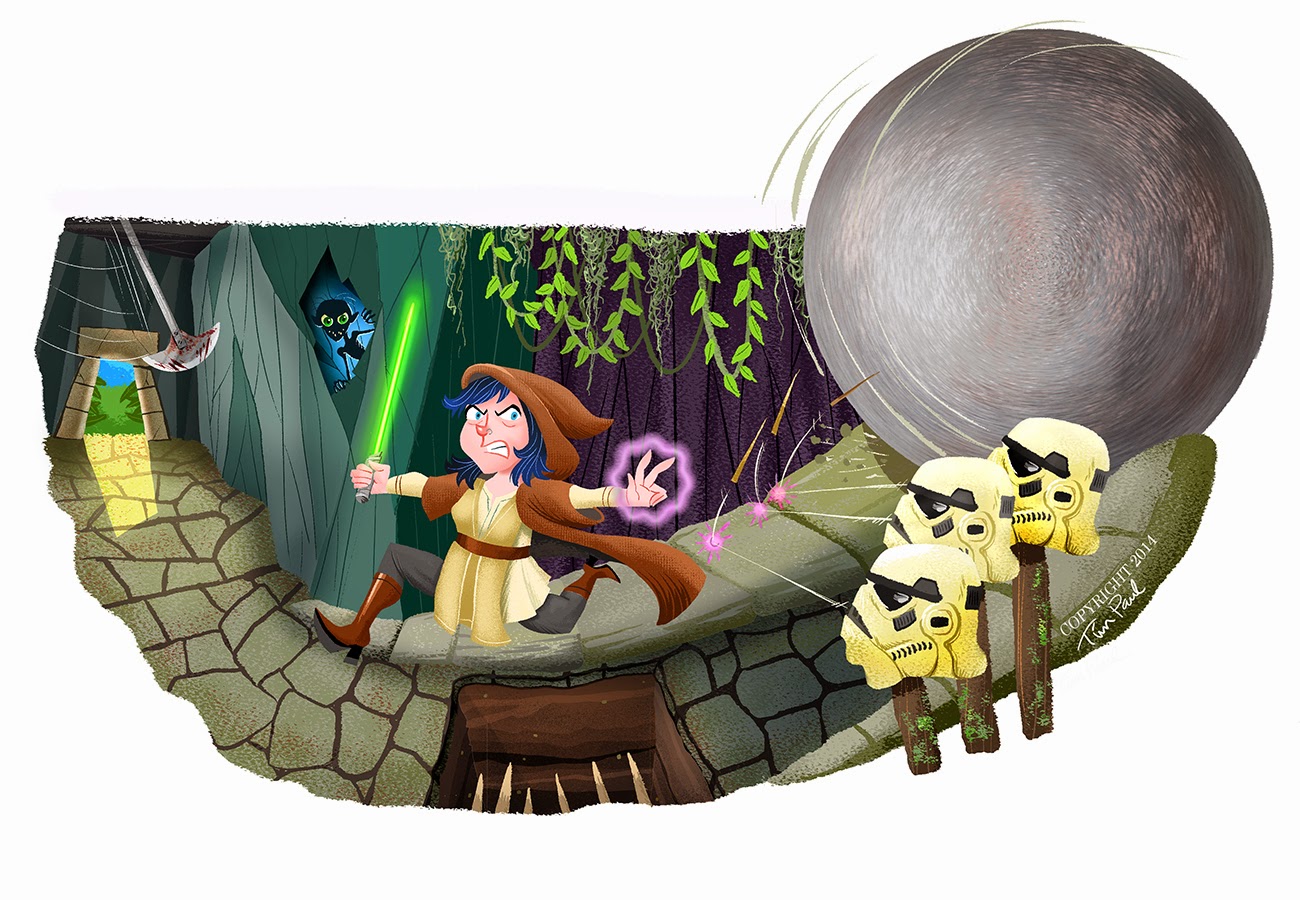
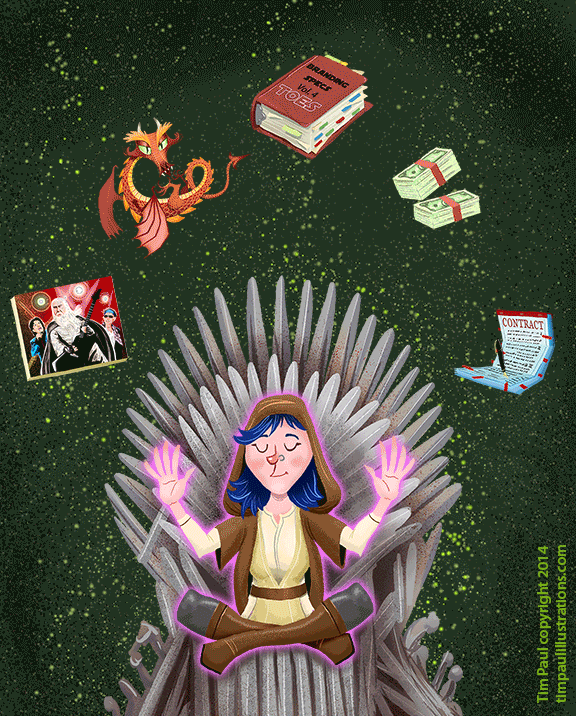



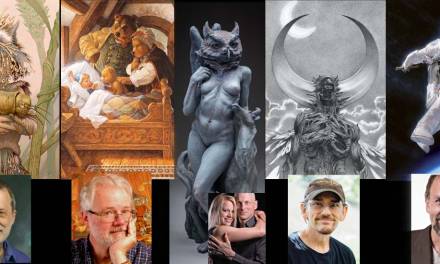
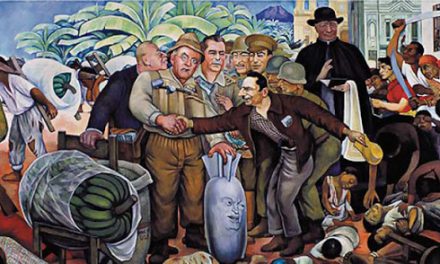
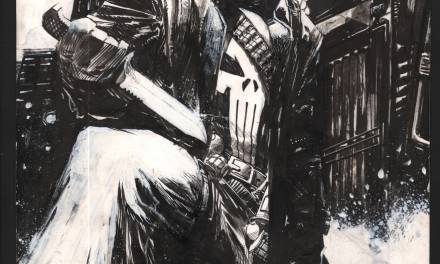
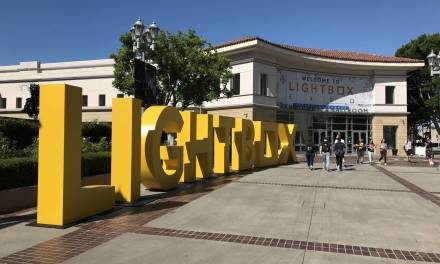
Good insight into all that you do for us artists. We appreciate you streamlining all that extra back-and-forth. You've done a good job making it pain-free by the time it gets back to our part of the process. Thanks for dealing with all those cooks in the kitchen, Zoe!
Nice interview! I really enjoy working on these projects. It's a lot of fun to try and come up with a different solution than what has already been shown on TV or film. I'd say the only drawback sometimes is the time it takes for licensors to approve the pieces.
Very informative and insightful! Thank you for a great & useful read.
Bah – first talking of that reference photos and then not showing a single one… 😉
Great interview though.
Thanks for the great interview Zoe and Lauren. A question for my students. I read the interview a couple of times but couldn't find the answer. In a portfolio is it best to have art addressing a specific IP or are you just looking for quality and style?
Generally I say I look at portfolios for the quality and style first…I assume that an artist can make their style fit any number of specific books or properties…I'll let Zoe answer that one as far as IPs go…
hahaha. well there was one on the artist selfie post a few weeks ago…
“hurry up and wait” is the name of the game. trust us, we hate it as much as you do when our approvers sit on things…
Hey Bill! Thanks for the question! It varies from art director to art director; generally, style and quality is always king, but a painting in the same GENRE (sci-fi, cyberpunk, fantasy,steampunk) as the IP you want will show interest and competence in the area. Specific IP art is a very direct “yes I like to work in this IP”, but is not necessary.
Thanks a lot Zoe and Lauren. And Lauren these posts are becoming worthy of gathering in some kind of accessible reference point.
funny you should say that, bill……stay tuned.